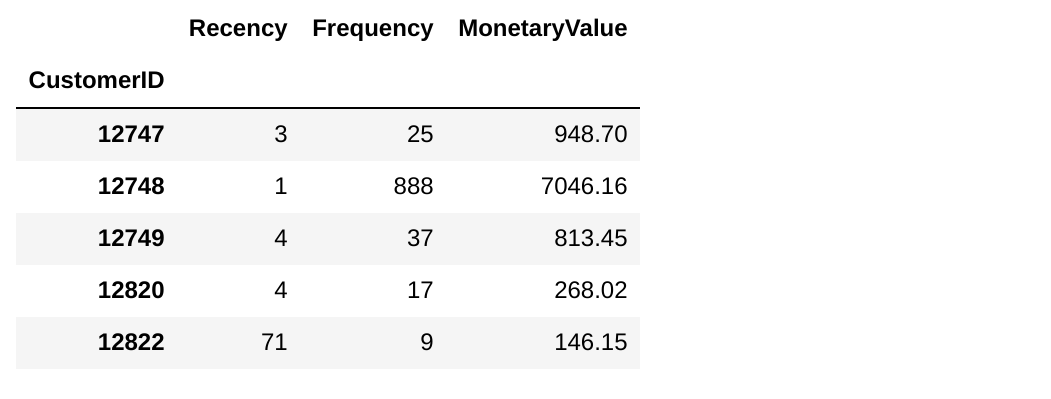Calculating RFM metrics
Customer Segmentation in Python

Karolis Urbonas
Head of Data Science, Amazon
Definitions
- Recency - days since last customer transaction
- Frequency - number of transactions in the last 12 months
- Monetary Value - total spend in the last 12 months
Dataset and preparations
- Same
onlinedataset like in the previous lessons - Need to do some data preparation
- New
TotalSumcolumn =QuantityxUnitPrice.

Data preparation steps
We're starting with a pre-processed online DataFrame with only the latest 12 months of data:
print('Min:{}; Max:{}'.format(min(online.InvoiceDate),
max(online.InvoiceDate)))
Min:2010-12-10; Max:2011-12-09
Let's create a hypothetical snapshot_day data as if we're doing analysis recently.
snapshot_date = max(online.InvoiceDate) + datetime.timedelta(days=1)
Calculate RFM metrics
# Aggregate data on a customer level datamart = online.groupby(['CustomerID']).agg({ 'InvoiceDate': lambda x: (snapshot_date - x.max()).days, 'InvoiceNo': 'count', 'TotalSum': 'sum'})# Rename columns for easier interpretation datamart.rename(columns = {'InvoiceDate': 'Recency', 'InvoiceNo': 'Frequency', 'TotalSum': 'MonetaryValue'}, inplace=True)# Check the first rows datamart.head()
Final RFM values
Our table for RFM segmentation is completed!

Let's practice calculating RFM values!
Customer Segmentation in Python

